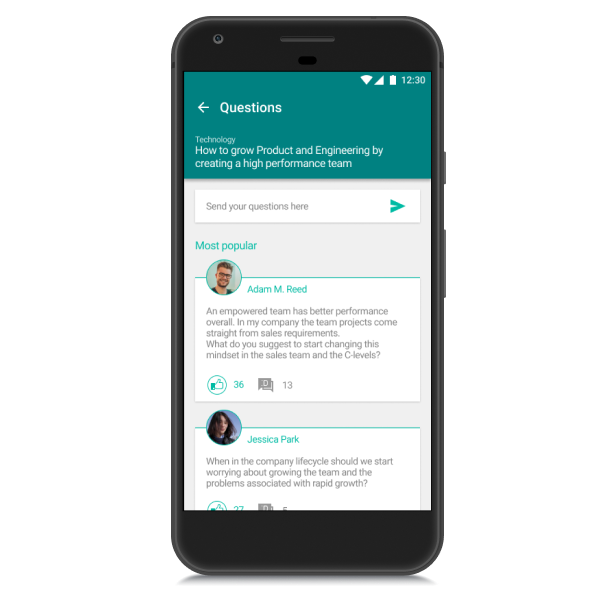The solution
The feature would be integrated within the schedule feature of the event app, with each session having its own Q&A area. To minimize work while setting up the feature, I defined that once it was activated, every session registered for the app would have a Q&A area by default. Organizers could then deactivate the feature for specific sessions, like coffee breaks (I believe they would be very popular, though).

Optional moderation
If moderation is activated, questions must be approved before appearing in the app. This gave the organizers complete control over the content, but they needed to be conscious of the extra work to manage these questions, emphasised by Customer Success. This could be done either from the app or from the CMS, to give more flexibility to moderators.

Priority to popular questions
Attendees could like questions they found interesting besides submitting their own questions. Popular questions were shown on top, to help moderators choose the next one. Questions already answered would be tagged as such and moved to the end of the list, so the focus could be on the new questions.

Relevant even after the session is over
The ability to not only like, but also comment in questions created the opportunity for answered questions to be discussed by attendees and even by the speakers themselves if they had a profile in the app. This extended the knowledge exchange even after the Q&A session was finished.

Ready for use at the stage
In order to support speakers while answering the questions, I decided to include a visualization mode to be used on the stage screen. It would highlight the question being answered and present the other questions in popularity order. Through the stage screen, both the audience and the person answering would be able to check the original question when needed.
Synced through all apps
The same questions would be shown through the app, the CMS and the visualization mode and could be controlled by the organization through any of them, so they all needed to be in sync. When the moderator chose a question to be answered in their app, the visualization mode would update to show the new question on top and rearrange the other questions, sorting them by the number of likes.






